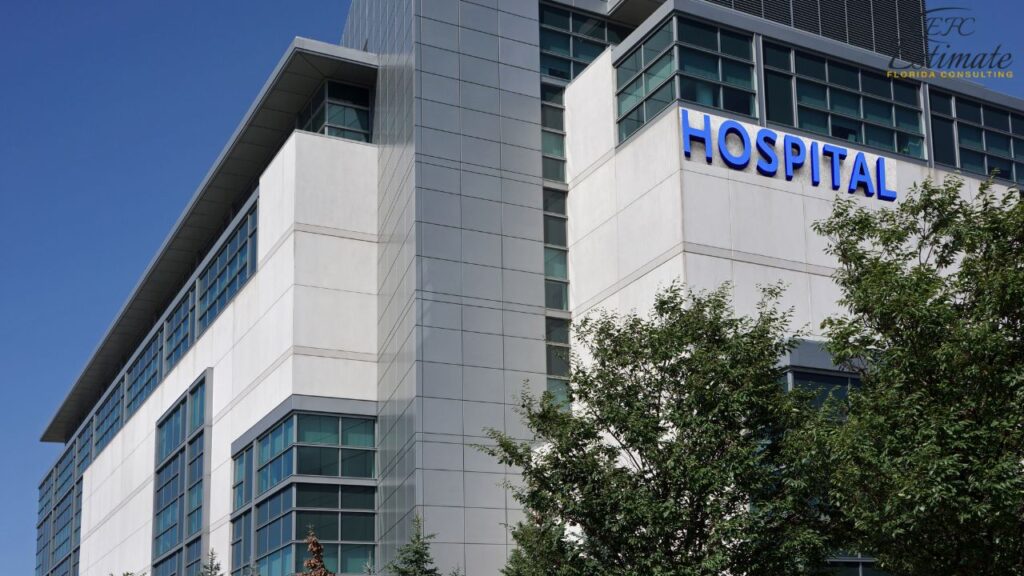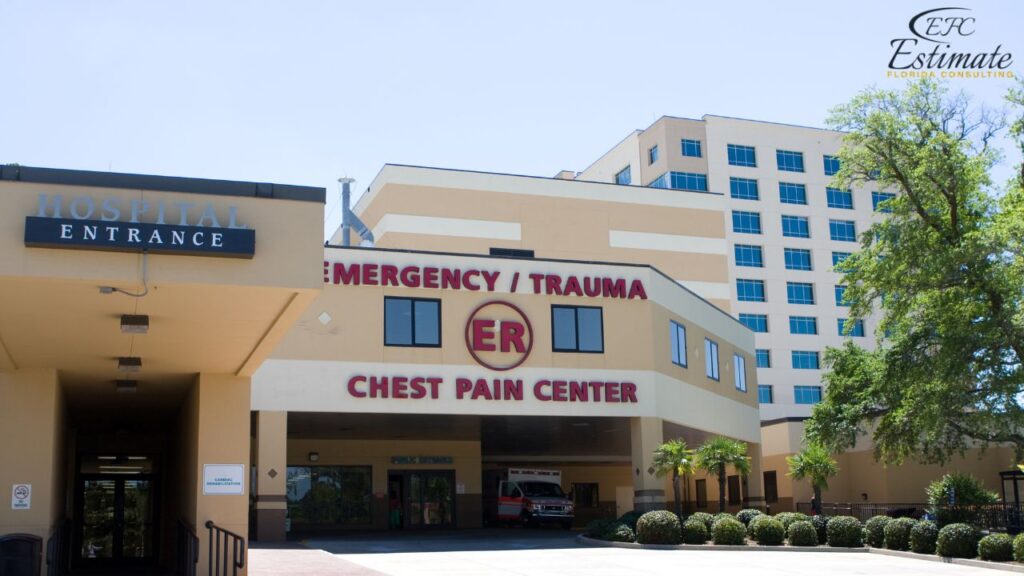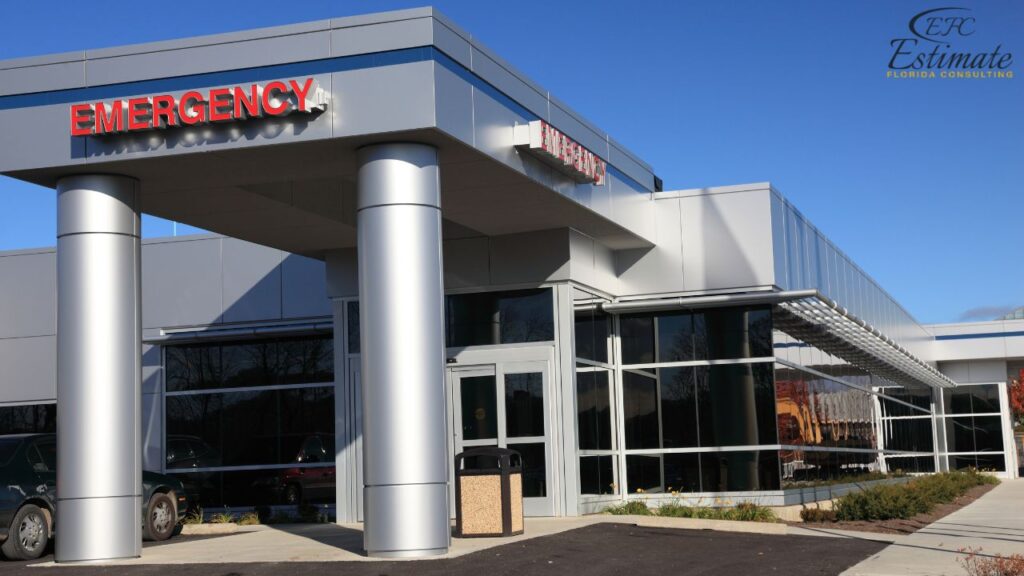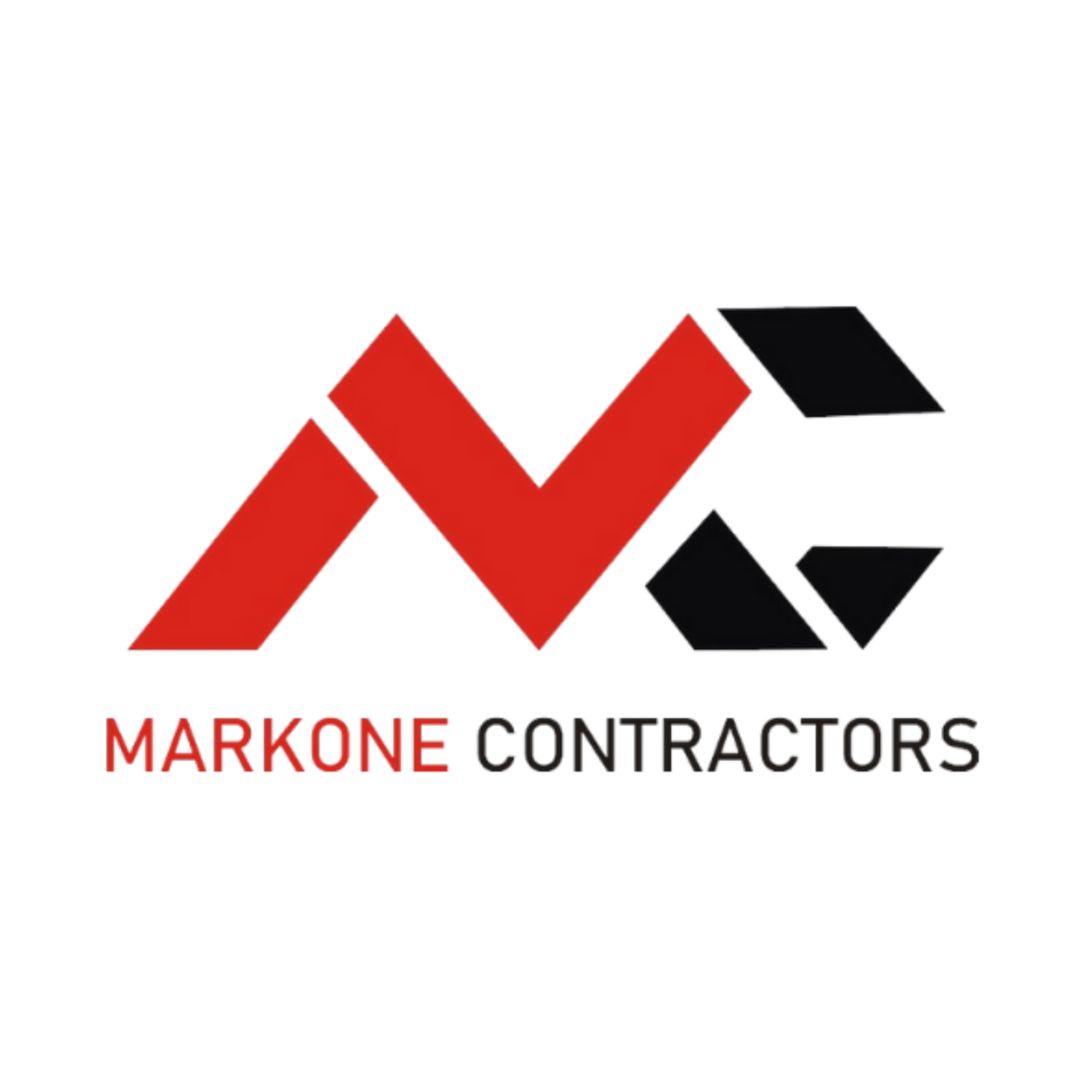Hospital Construction Cost Estimator
Building a hospital is a complex and costly endeavor, requiring precision, experience, and careful planning to manage your budget effectively. At Estimate Florida Consulting, we specialize in providing professional construction estimates to help you make informed decisions for your hospital construction project.
Whether you’re constructing a small community clinic or a large-scale medical facility, having an accurate cost estimate is essential for ensuring your project’s success.

What is the Average Cost of Hospital Construction?
The average cost of hospital construction can vary significantly depending on the size of the hospital, its location, the complexity of its design, and the services it offers. Below is an estimated breakdown of costs based on the size of the hospital:
Hospital Size (Square Feet) | Cost per Square Foot | Total Estimated Cost |
Small Hospital (25,000 sq ft) | $400 – $600 | $10 million – $15 million |
Medium Hospital (50,000 sq ft) | $450 – $650 | $22.5 million – $32.5 million |
Large Hospital (100,000 sq ft) | $500 – $700 | $50 million – $70 million |
Major Hospital (200,000+ sq ft) | $550 – $750 | $110 million – $150 million+ |
Factors Influencing Hospital Construction Costs
Hospital construction is more than just building walls and laying floors. Several key factors contribute to the overall cost. Understanding these factors will help you plan effectively and manage your budget.
1. Hospital Size and Scope
The size of the hospital and the complexity of its design are critical cost drivers. Small hospitals or outpatient clinics will cost significantly less than a large regional medical center with multiple departments. Specialty hospitals, such as cancer treatment centers or trauma facilities, often need custom designs and highly specialized equipment, further increasing the total cost.
Larger hospitals not only need more space but also require specialized systems for patient care, sanitation, and environmental control. These systems are often expensive to install and maintain, and the larger the hospital, the higher these costs become.
Get Acquainted with Hospital Construction
2. Location and Geographic Factors
Location is a major factor in determining hospital construction costs. Building in urban areas generally incurs higher land acquisition costs, labor rates, and permitting fees. On the other hand, rural areas may offer cheaper land, but the cost of transporting materials and hiring skilled labor could rise. Geographic factors, such as climate and local building regulations, also influence the construction timeline and budget.
Hospitals built in areas with extreme weather conditions, such as regions prone to hurricanes, earthquakes, or heavy snow, must comply with additional safety regulations and structural requirements. These added precautions can drive up both material and labor costs.
3. Compliance with Building Codes and Healthcare Regulations
Hospitals are subject to rigorous building codes and healthcare regulations. These codes ensure that the facility is safe, accessible, and capable of meeting the unique demands of medical care. Hospitals must adhere to fire safety codes, install proper ventilation systems, and ensure that plumbing and electrical systems meet medical standards. Compliance with the Americans with Disabilities Act (ADA) and state health regulations also adds to the cost.
Failure to meet these codes can result in significant delays, costly retrofits, and even fines. Ensuring compliance from the beginning of the project can help avoid unexpected expenses later on.
4. Medical Equipment and Technology Integration
Medical Equipment Cost Breakdown | Cost Estimate |
MRI Machine | $1 million – $3 million |
X-Ray Equipment | $150,000 – $500,000 |
Patient Monitoring Systems | $50,000 – $100,000 |
Surgical Equipment | $500,000 – $2 million |

The costs of medical equipment can significantly increase the overall budget. It’s essential to allocate a substantial portion of your budget to cover the purchase and installation of these systems.
5. Sustainability and Energy Efficiency
Many hospitals are moving towards more sustainable and energy-efficient designs to reduce their environmental impact and lower operating costs. However, incorporating energy-efficient systems like solar panels, energy-efficient HVAC systems, and LEED certification standards can increase initial construction costs. While these costs are higher upfront, the long-term savings on energy bills can offset the initial investment.
In some cases, governments or local municipalities offer incentives for building green hospitals, which can help reduce the financial burden. These savings can be crucial, especially in large hospitals that require significant energy to operate.
6. Labor and Material Costs
Fluctuations in labor and material costs are another important factor. The price of materials like steel, concrete, and lumber can rise due to supply chain issues or increased demand. Additionally, hiring skilled labor, such as electricians, plumbers, and HVAC technicians, can be costly, especially if there’s a labor shortage.
In regions where specialized trades are in short supply, the cost of hiring skilled workers can escalate quickly, adding to the overall expense of the project. Planning ahead and securing contracts with reliable suppliers and contractors can help mitigate these costs.
7. Technology Integration for Patient Care
In today’s healthcare environment, hospitals must integrate advanced technology for patient care and facility management. From electronic medical records (EMR) systems to telemedicine capabilities, these technologies require significant infrastructure and can drive up construction costs. Hospitals must also account for future technological advancements and ensure that the facility is equipped to handle upgrades.
Hospitals that invest in the latest healthcare technology tend to attract more patients and provide better care, making this a necessary expense for any modern medical facility.
Additional Costs to Consider in Hospital Construction
Beyond the core construction costs, several additional expenses must be factored into your budget. These include:
Additional Costs | Estimated Cost |
Site Preparation | $50,000 – $500,000 |
Design and Architect Fees | 5% – 15% of total construction cost |
Permitting and Inspections | $20,000 – $100,000 |
Utilities and Infrastructure | $200,000 – $1 million |
Furnishing and Interior Finishing | $500,000 – $2 million |
Site Preparation: $50,000 – $500,000
Site preparation involves clearing the land, grading, and ensuring that the site is ready for construction. This may include removing trees, rocks, or other obstacles, as well as leveling the ground to create a stable foundation. The cost of site preparation can vary significantly depending on the size and condition of the site. A small, straightforward project might cost around $50,000, while a larger or more complex site requiring extensive grading and preparation could reach up to $500,000. This stage is critical as it sets the groundwork for the entire construction process.
Design and Architect Fees: 5% – 15% of Total Construction Cost
Architectural design and planning are essential elements of any construction project. Design and architect fees typically range between 5% and 15% of the total construction cost, depending on the complexity of the design and the level of customization required. For example, a simple design for a residential project may be on the lower end of the spectrum, while a highly detailed, large-scale commercial project could require fees closer to 15%. These fees cover the development of blueprints, plans, and detailed specifications, ensuring that the construction meets regulatory standards and aesthetic goals.
Permitting and Inspections: $20,000 – $100,000
Before construction can begin, you must obtain the necessary permits and undergo regular inspections to ensure compliance with local building codes. The cost of permitting and inspections can range from $20,000 to $100,000, depending on the project’s location, size, and complexity. Larger projects in urban areas with strict regulations may incur higher permitting costs, while smaller projects in less regulated areas may fall on the lower end of the range. Inspections are required at various stages of construction to ensure safety and adherence to legal standards.
Utilities and Infrastructure: $200,000 – $1 Million
Installing utilities such as water, electricity, gas, and sewage systems is another significant expense in a construction project. The cost of utilities and infrastructure can range from $200,000 to $1 million, depending on the project’s scope and location. For example, projects located in remote areas may require more extensive infrastructure development, such as building new roads or connecting to distant utility networks, leading to higher costs. Urban projects, on the other hand, may benefit from existing infrastructure, reducing the overall expense.
Furnishing and Interior Finishing: $500,000 – $2 Million
Once the structural aspects of the construction are complete, furnishing and interior finishing are required to make the building functional and visually appealing. These costs include installing flooring, cabinetry, lighting, fixtures, and furniture. Depending on the level of luxury and customization, the cost of furnishing and interior finishing can range from $500,000 to $2 million. High-end materials and custom designs will increase the price, while more standard finishes will keep costs on the lower end. This phase transforms the building from a shell into a livable or usable space, contributing to the final aesthetics and comfort of the project.
These costs can vary depending on the project’s location, complexity, and local regulations. Ensuring that your budget includes these additional expenses is crucial for avoiding delays or financial strain during the construction process.
Cost Breakdown by Hospital Department
Different departments within a hospital come with their own unique construction requirements. Some areas, like operating rooms or intensive care units, need more advanced systems and higher-grade materials, which increase costs.
Department | Cost per Square Foot | Estimated Total Cost |
Emergency Room | $600 – $800 | $1.5 million – $2 million |
Operating Rooms | $1,200 – $2,000 | $2 million – $5 million |
Intensive Care Unit (ICU) | $1,000 – $1,500 | $1 million – $3 million |
Radiology and Imaging | $800 – $1,200 | $800,000 – $1.5 million |
Patient Rooms (Private) | $500 – $700 | $250,000 – $500,000 |
Outpatient Clinics | $400 – $600 | $800,000 – $1.2 million |
Emergency Room: $600 – $800 per Square Foot
The emergency room (ER) is one of the most critical areas in a hospital, often requiring rapid access, advanced equipment, and specialized medical spaces. The cost per square foot for an ER typically ranges from $600 to $800, depending on the complexity of the design and the equipment needed. The total estimated cost for building or renovating an ER ranges from $1.5 million to $2 million.
This cost accounts for the necessary infrastructure to handle emergencies, such as trauma rooms, triage areas, and diagnostic facilities.

Operating Rooms: $1,200 – $2,000 per Square Foot
Operating rooms are among the most expensive spaces to construct in a hospital due to the advanced surgical equipment and sterile environment required. The cost per square foot for operating rooms is higher, ranging from $1,200 to $2,000. The total estimated cost to build a surgical suite with one or more operating rooms can range from $2 million to $5 million, depending on the size of the operating room, the equipment needed, and the level of specialization (such as robotic surgery capabilities or specialized lighting systems).
Intensive Care Unit (ICU): $1,000 – $1,500 per Square Foot
The intensive care unit (ICU) requires specialized equipment and infrastructure to care for critically ill patients. ICUs must be designed for close patient monitoring and advanced life-support systems. The construction cost per square foot for an ICU ranges from $1,000 to $1,500, with the total estimated cost falling between $1 million and $3 million, depending on the size of the unit and the number of patient beds. These costs reflect the need for specialized equipment and facilities, such as negative pressure rooms, specialized ventilation, and medical gas systems.
Radiology and Imaging: $800 – $1,200 per Square Foot
Radiology and imaging departments are essential for diagnostics and typically include equipment like MRI machines, CT scanners, and X-ray units. The cost per square foot for building a radiology and imaging department is estimated to be $800 to $1,200, with total costs ranging from $800,000 to $1.5 million. These departments require shielding to protect against radiation, specialized electrical and HVAC systems, and rooms that accommodate large imaging equipment, which contribute to the overall cost.
Patient Rooms (Private): $500 – $700 per Square Foot
Private patient rooms provide a more comfortable and private environment for patients during their hospital stay. The cost per square foot for constructing private patient rooms ranges from $500 to $700, depending on the level of luxury and amenities provided. The total estimated cost for building private patient rooms typically ranges from $250,000 to $500,000, depending on the number of rooms and the level of interior finishes and medical infrastructure required.
Outpatient Clinics: $400 – $600 per Square Foot
Outpatient clinics are designed for patients who do not require overnight stays and often include exam rooms, diagnostic facilities, and consultation areas. The cost per square foot for constructing outpatient clinics ranges from $400 to $600. The total estimated cost for building an outpatient clinic is between $800,000 and $1.2 million, depending on the size of the clinic and the types of services offered. These clinics are generally less expensive to build than inpatient facilities, but they still require specialized infrastructure to support medical services.
Download Template For Hospital Construction Project Breakdown
- Materials list updated to the zip code
- Fast delivery
- Data base of general contractors and sub-contractors
- Local estimators

Average Cost to Build a Hospital by Type
Building a hospital comes with a variety of costs that can fluctuate depending on the type of hospital, the equipment required, and the amount of space per room. Hospitals with advanced technology, more spacious rooms, or specialized equipment tend to have higher construction costs. Below, we’ll break down the average costs for different hospital types.
Emergency Hospitals
Emergency hospitals are designed to provide urgent care for patients who need immediate medical attention without prior appointments. Due to their role in handling unpredictable emergencies, these hospitals are equipped with specialized medical technology. Emergency hospitals are often smaller than regular hospitals but cost more per square foot because of their specific requirements.
These hospitals are often built using prefabricated materials for rapid construction, especially in emergency situations. They are typically designed for short-term use due to safety regulations and are often completed within a few weeks to handle sudden demand. The cost of constructing emergency hospitals now ranges from $220 to $550 per square foot after the 10% increase, reflecting the need for specialized construction methods and equipment.
Micro Hospitals
Micro hospitals are small-scale facilities with 8 to 10 beds, designed to offer essential services like laboratory testing, imaging, pharmacy, and short-term inpatient care. These hospitals help alleviate pressure on larger medical centers by treating less severe cases, reducing the patient load on full-scale hospitals.
Due to their smaller size, micro hospitals are more affordable to build compared to larger facilities. With the 10% cost increase factored in, micro hospitals now cost between $330 and $440 per square foot. This cost is mainly influenced by the types of services offered and the level of care provided. Micro hospitals are an increasingly popular solution for communities in need of accessible healthcare without the high costs of building a large facility.
Smart Hospitals
Smart hospitals represent the cutting edge of modern healthcare, integrating advanced technology such as telehealth, remote patient monitoring, and electronic health records into their operations. These hospitals are designed to offer a higher level of patient care through innovative systems, including infection control features like sliding doors and intelligent patient beds.
Smart hospitals come with higher construction costs due to their advanced infrastructure and technology needs. Built with prefabricated materials for efficiency, these hospitals are now priced between $550 and $715 per square foot, reflecting a 10% increase in cost. Despite their higher initial investment, smart hospitals often repay their construction loans faster due to operational efficiency and the enhanced services they provide to patients.
Small Hospitals
Small hospitals, defined as those with fewer than 100 beds, provide essential medical services, including medium to high-level care, imaging, lab services, and minor surgeries. The primary difference between small hospitals and larger facilities lies in the number of beds and the degree of specialization.
Despite their smaller size, small hospitals offer comprehensive healthcare services, making them a crucial part of the medical infrastructure. After the 10% cost increase, the construction cost for small hospitals is now around $440 per square foot. These hospitals serve as an effective solution for expanding healthcare access in underserved areas while maintaining manageable construction costs.

How to Reduce Hospital Construction Costs with Estimate Florida Consulting?
At Estimate Florida Consulting, we are dedicated to helping our clients manage and reduce construction costs without sacrificing quality. Here are some ways we help you achieve cost savings through accurate estimates and strategic planning.
1. Modular Construction Methods
Modular construction is an increasingly popular approach in hospital projects because it allows for faster assembly and lower labor costs. Estimate Florida Consulting includes modular construction options in our estimates, allowing you to explore time-saving and cost-efficient construction methods that can be used without compromising on quality.
2. Phased Construction
Phased construction allows you to build the hospital in stages, focusing first on critical departments and expanding as needed. This approach can help spread out costs over time, making it easier to manage cash flow. Our estimates provide detailed phased construction plans so you can control spending and prioritize high-need areas.
3. Value Engineering
Working closely with your team, we identify cost-saving opportunities without compromising the hospital’s functionality or safety. Whether it’s selecting alternative materials or optimizing the design, Estimate Florida Consulting helps find the balance between cost and quality through value engineering strategies.
4. Utilizing Tax Incentives
Many states and municipalities offer tax incentives or rebates for constructing energy-efficient hospitals. Estimate Florida Consulting helps you navigate these incentives, ensuring that they are factored into your estimate. These savings can significantly offset the initial cost of implementing sustainable building practices.
5. Comparing Contractor Quotes
We recommend obtaining at least three contractor quotes before beginning construction. Our detailed estimates provide a solid benchmark, enabling you to negotiate competitive rates and ensure you stay within your budget. With Estimate Florida Consulting, you can be confident that your project will be completed at the best possible cost.
Get 5 New Leads Next 7Days With Our System
- Multi-Family Building
- Hotel Building
- Hospital Building
- Warehouse Building
- High-Rise Building
- Shopping Complex
Why Choose Estimate Florida Consulting?
At Estimate Florida Consulting, we bring extensive experience in providing accurate construction estimates for healthcare facilities. Our services are tailored to meet the specific needs of hospital construction, ensuring that every detail is accounted for. By partnering with us, you benefit from:
- Comprehensive construction cost estimates
- Detailed department-specific breakdowns
- Energy efficiency and sustainability estimates
- Accurate labor and material cost forecasting
- Tailored cost-saving strategies
Our team of professional estimators is committed to delivering the most accurate and detailed estimates, helping you confidently plan and execute your hospital construction project.
FAQs
Hospital costs are calculated based on several factors, including the type of services provided (e.g., surgery, diagnostics), length of stay, facility fees, labor costs (medical staff), equipment usage, medications, and administrative expenses. Insurance reimbursements and regional cost variations also influence the final pricing.
The most expensive hospitals to build are typically large, advanced medical centers with specialized facilities and cutting-edge technology. Notably, projects like California’s Loma Linda University Medical Center ($1.5 billion) and the University of California, San Francisco Medical Center ($1.5 billion) rank among the most expensive, with costs driven by state-of-the-art equipment, regulatory requirements, and specialized infrastructure.
To estimate the cost of a construction project, you consider factors like material costs, labor, equipment, permits, and overhead. Begin by calculating the scope of work, project size, and complexity. Then, account for contingencies and any potential fluctuations in material or labor prices. Cost estimation tools, software, or services, like those offered by Estimate Florida Consulting, can help ensure accuracy in projecting total costs.
The cost to build a standard hospital in the U.S. typically ranges from $300 to $700 per square foot, depending on location, design, and the level of care facilities. For an average-sized hospital (200,000 to 300,000 sq ft), the total cost can range between $60 million to $210 million. High-tech hospitals with advanced equipment and specialized departments may cost even more.
The average profit margin for a hospital in the U.S. typically ranges between 5% to 15%, depending on the hospital’s location, size, type (non-profit or for-profit), and patient demographics. Larger hospitals or those with specialized services tend to have higher margins, while rural or smaller hospitals may operate with lower profit margins or even deficits due to higher operating costs and lower patient volumes.
We Provide Hospital Construction Cost Estimator
Florida’s Cities
- Alachua
- Altamonte Springs
- Anna Maria
- Apalachicola
- Apopka
- Atlantic Beach
- Auburndale
- Aventura
- Avon Park
- Bal Harbour
- Bartow
- Bay Harbor Islands
- Boca Raton
- Bonita Springs
- Boynton Beach
- Bradenton
- Brooksville
- Cape Canaveral
- Cape Coral
- Casselberry
- Celebration
- Chipley
- Cinco Bayou
- Clearwater
- Clermont
- Clewiston
- Cocoa
- Cocoa Beach
- Coconut Creek
- Coral Gables
- Coral Springs
- Crystal River
- Dania Beach
- Davie
- Daytona Beach
- Deerfield Beach
- DeFuniak Springs
- DeLand
- Delray Beach
- Deltona
- Destin
- Dunedin
- Eagle Lake
- Edgewater
- Edgewood
- Eustis
- Fort Lauderdale
- Fort Meade
- Fort Myers
- Fort Myers Beach
- Fort Pierce
- Fort Walton Beach
- Fruitland Park
- Gainesville
- Greenacres
- Green Cove Springs
- Gulf Breeze
- Gulfport
- Haines City
- Hallandale Beach
- Hawthorne
- Hialeah
- Hialeah Gardens
- Highland Beach
- Hollywood
- Holly Hill
- Holmes Beach
- Homestead
- Hypoluxo
- Indialantic
- Jacksonville
- Juno Beach
- Jupiter
- Key Biscayne
- Key West
- Kissimmee
- LaBelle
- Lady Lake
- Lake Alfred
- Lakeland
- Lake Mary
- Lake Park
- Lake Wales
- Lake Worth
- Lantana
- Largo
- Lauderdale By The Sea
- Lauderhill
- Leesburg
- Lighthouse Point
- Longboat Key
- Longwood
- Maitland
- Marco Island
- Margate
- Melbourne
- Melbourne Beach
- Miami
- Miami Beach
- Milton
- Minneola
- Miramar
- Mount Dora
- Naples
- Neptune Beach
- New Port Richey
- New Smyrna Beach
- Niceville
- North Miami
- North Miami Beach
- North Port
- Oakland Park
- Ocala
- Ocean Ridge
- Ocoee
- Okeechobee
- Oldsmar
- Orange Park
- Orlando
- Ormond Beach
- Oviedo
- Palatka
- Palm Bay
- Palm Beach
- Palm Beach Gardens
- Palm Coast
- Palmetto
- Panama City
- Panama City Beach
- Pembroke Pines
- Pensacola
- Pinecrest
- Pinellas Park
- Plant City
- Plantation
- Pompano Beach
- Ponce Inlet
- Port Orange
- Port St. Lucie
- Punta Gorda
- Rockledge
- Royal Palm Beach
- St. Augustine
- St. Augustine Beach
- St. Cloud
- St. Pete Beach
- St. Petersburg
- Safety Harbor
- Sanford
- Sanibel
- Sarasota
- Satellite Beach
- Seaside
- Sebastian
- Sewall's Point
- Shalimar
- Stuart
- Surfside
- Tallahassee
- Tamarac
- Tampa
- Tarpon Springs
- Tavares
- Temple Terrace
- Titusville
- Treasure Island
- Valparaiso
- Venice
- Vero Beach
- Wellington
- West Melbourne
- West Palm Beach
- Weston
- Wilton Manors
- Winter Garden
- Winter Haven
- Winter Park
- Winter Springs
Google Reviews



Process To Get Hospital Construction Cost Estimate Report
Here I am going to share some steps to get the hospital construction cost estimate report.
-
You need to send your plan to us.
You can send us your plan on info@estimatorflorida.com
-
You receive a quote for your project.
Before starting your project, we send you a quote for your service. That quote will have detailed information about your project. Here you will get information about the size, difficulty, complexity and bid date when determining pricing.
-
Get Estimate Report
Our team will takeoff and estimate your project. When we deliver you’ll receive a PDF and an Excel file of your estimate. We can also offer construction lead generation services for the jobs you’d like to pursue further.

